Guest Blog
Oregon Tradeswomen’s Executive Director Reflects on Women’s History Month
During the month of March in the United States, we officially celebrate women who’ve dedicated their lives to create a better future as “Women’s History Month”, tracing the event beginnings back to the first International Women’s Day in 1911.
We take this time to honor the many women in our nation’s history who fought for justice, equality, and equity, including Susan B. Anthony, Sojourner Truth, Lucy Stone, Lucretia Mott, Elizabeth Cady Stanton, Harriet Tubman, and Alice Paul. We honor our sisters in the labor movement who worked to ensure equal rights and equal pay in the workplace, such as Lucy Parsons, Mary Harris Jones, Leonora O’Reilly, Frances Perkins, Luisa Moreno, and Esther Peterson. We celebrate our sisters in more recent decades like Shirley Ware, Linda Chavez-Thompson, Mary Kay Henry, and others who continue to fight for our rights and for our future. We hold up the iconic symbol of our tradeswomen movement, Rosie the Riveter, reminding the world and ourselves, “We Can Do It!”.
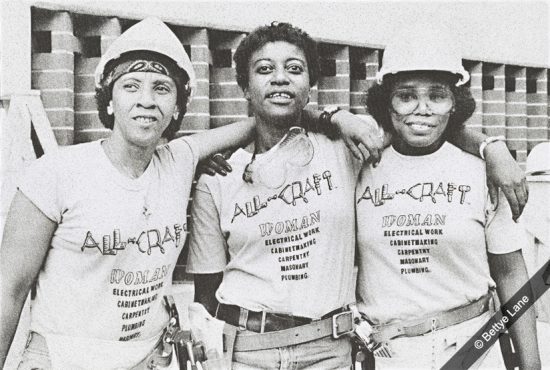
Tradeswomen, 1981. © Bettye Lane
This month, Oregon Tradeswomen would like to take a moment to honor and acknowledge the incredible contributions tradeswomen make each and every day. Here in Portland, across our state, and throughout our nation, tradeswomen are still pioneers in industries like construction, transportation, manufacturing, and rail, working to care for their families and build our communities. Up early and home late, our sisters are not just working for a paycheck, they are working for change. They are active mentoring, volunteering, working in their unions, participating in committees, and serving as role models. They vote, they organize, they donate time, talent, and dollars to our tradeswomen movement to impact change. They raise their hands, their fists, and their voices. Yet often, our sisters are not heard.
In this era of #MeToo, we need to stand strong in our support of, and in solidarity with tradeswomen. For far too long, women working in our industry have experienced sexual harassment at an alarming rate, and often at great personal cost. According to a bipartisan 2016 report of the Co-Chairs of the EEOC Special Task Force on the Study of Harassment in the Workplace, 88 per cent of female construction workers experience sexual harassment at work, compared to 25 per cent of women in the general workforce. Women leave the construction sector at a faster rate than their male colleagues, according to a 2014 report by the National Women’s Law Center – noting that in some trades, 70 percent of women leave before completing their apprenticeship training program, compared to 53 percent of men. The women who leave point to hostile work environments and sexual harassment as reasons for exiting.
At Oregon Tradeswomen, we are working to change our industry and create a different future – not just for women, but for all of our workforce. We know that when worksites are equitable and respectful, all workers benefit, not just women. Industry benefits too – studies show a decrease in employee turnover, greater productivity, increased job satisfaction and loyalty, and overall improved performance. Our work includes the recent implementation of a new model for shifting jobsite culture, and is currently being implemented at the Multnomah County Courthouse project. This bystander intervention model is demonstrating promises outcomes in creating respectful worksites. It is providing tools for the construction workforce to speak up, speak out, and make a difference. We look forward to sharing more in the coming months on this model, and in the meantime, we ask you to join us in honoring tradeswomen not just this month, but every day.

Kelly Kupcak
Executive Director of Oregon Tradeswomen
Guest Blog: Apparatus Contractor Services
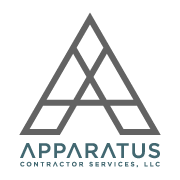
We are so excited to announce Apparatus Contractor Services, LLC to the women of our contracting and trades industry! Apparatus is a suite of back office services for small contracting companies, general contractors, independent and subcontractors, and tradeswomen (and men!).
Through months of preparation, we’ve put together three month-to-month subscription-based programs. Each one offers critical business services including administrative assistance, accounting, payroll, marketing, and more. We’re the first of our kind in the Portland area: a comprehensive digital support solution for contractors. We offer our subscription services to contractors locally and nationally.
Apparatus is the end-result of a careful examination of the challenges faced by growing contracting companies. Companies made of, or ran by, people just like you! We believe that the three programs we offer will be a testament to Apparatus’ skill for process and service design. Most importantly, our willingness and determination to really understand the needs of our future contractor clients.
As the marketing manager, I was witness to the challenges we faced building Apparatus (building a business is hard work!). We wanted to resist the temptation to design the services we thought we should offer. Instead, we listened carefully to what we heard contractors tell us they need. We incorporated this feedback until we felt we had a product that would really help people as they start, grow, and scale their contracting businesses.
Here is a brief overview of the services each program provides:
- Apparatus Start! Program™ is intended to set and reinforce your business’s foundation through entity formation assistance, compliance management, document management, and full-service accounting and payroll.
- Apparatus Grow! Program™ incorporates all the features of Start! and adds business identity and branding as well as opportunities to enhance the professionalism of a contracting business through estimates and full proposals.
- Apparatus Scale! Program™ incorporates all the features of Start! and Grow! and adds an extensive suite of marketing and client management tools and services.
We also offer a variety of a la carte services available alongside each service package. We built these options out to encompass a broader range of need form our clients. The options include, but are not limited to, LLC formation assistance, contractor licensing assistance, and notices of right to a lien. As we grow, we look forward to evolving to meet the needs of our contractor client base.
Beyond unveiling our company, we’re also on a mission to get to know our contracting community better. We’re proud members of the Master Builders Association of Seattle, The Home Builders Associate of Portland and of course, Oregon Tradeswomen, Inc.! I love hearing from local contractors and encourage any woman, either aspiring in her career or established, to reach out and start a conversation.
Until next time!
Erin Lehmann, Marketing Manager
Apparatus Contractor Services, LLC
503-833-2888

About Apparatus Contractor Services, LLC: Apparatus Contractor Services, LLC was designed to power the back offices of small and large subcontractors and general contractors. Their back office services are tailored to the unique needs of contracting companies seeking to start, grow, and scale to their true potential.
Guest Blog: The Growing Trend of Green Energy Jobs

Guest Blog Written By: Danielle Hegedus
Careers related to renewable energy, or “green energy” are on the rise around the world. This is due in large part to advances in technology that have lowered the cost of renewable energy just as public interest in sustainable sources of power has hit an all-time high. The solar industry has increased 82% in the US in just the past three years. What’s more, wind energy jobs have increased 100%, with a new wind turbine installed every 2.4 hours in the first quarter of 2017! State and federal tax credits have also helped incentivize average consumers to adopt renewable energy, increasing the demand for a trained workforce. If you’re looking for your next career opportunity, or trying to find a way to break into the eco-friendly energy sector, here’s what you need to know.
How is Green Energy Classified? And Why is It So Important?
Whether it’s referred to as renewable, clean, or green energy, it’s energy that is generated from and naturally replenished by natural resources such as sunlight, rain, wind, or geothermal heat. Unlike traditional fossil fuel energy sources, renewable energy doesn’t emit carbon dioxide into the atmosphere. Along with other gases, carbon dioxide blocks heat from escaping our atmosphere, Our reliance on fossil-fuel-based energy has increased the concentration of carbon dioxide (CO2) in our atmosphere by more than a third since the Industrial Revolution began. In addition to making the temperature of the planet rise, CO2 emissions are impacting the severity of storms, and melting glaciers and contributing to sea levels rising, which has the potential to destroy animal habitats and force people who live on coasts to seek refuge in-land where they will face tough competition for increasingly scarce land for living and agriculture. Many people believe that the switch to renewable energy, along with other behavioral changes, can help reverse the effects of climate change. So if you choose to enter the green energy sector, you can feel good about the impact of your work on the health of the planet and future generations to come.
So What Kind of Job Can I Get?
You don’t have to be on a roof installing residential solar panels to work in the industry—though there are plenty of jobs in that field if you are interested! Get started now though, because by 2025, Oregon is projected to see the highest growth in the following clean energy job sectors: solar PV manufacturing, wind power development, green building design services, sustainable bioenergy, and smart-grid technology.
The highest growth is projected in the solar industry. While the Pacific Northwest may have a reputation for being rainy, you can still expect at least 144 sunny days a year in Oregon, making solar power a great option for families or businesses looking to reduce their utility expenses and their environmental footprint. There are a lot of job opportunities in the field, too. Are you customer service oriented and good at breaking down complex concepts? You might be great at helping customers understand the long-term benefits of investing in solar, while helping them access tax incentives and rebates to maximize their return on investment. If you prefer to be out in the field, careers as a solar fabricator or installer pay an average $15-20 an hour with higher wages possible with professional certification.

If solar isn’t up your alley, but you have an aptitude for solving problems, you may want to consider engineering. Engineers make up a large part of the green energy workforce (typically, but not limited to mechanical, electrical, and environmental), designing systems to harness and transport power such as solar cells or hydroelectric dams. While you’ll need to have a bachelor’s degree at a minimum, engineering jobs can pay from the high $60K to six figures.
Finally, it’s nearly impossible to drive through Oregon without seeing a wind turbine. Oregon ranks in the top five states in the country for its generation and use of wind power. If you have the capital and the willingness to work hard and build a project from the ground up, you may want to consider highly lucrative wind farming. If the cost and logistics of running a massive wind farm aren’t for you, don’t worry. Oregon’s wind farms need lots of employees to help build and instal turbines, set up power distribution, and fix structures when they break down. To access these jobs, a background in engineering, construction, electrical and mechanical work, and/or heavy machinery are all major pluses and can help increase your hourly rate or annual salary.

Where can I Get Training?
Check out these training resources from the Department of Energy to get started. They also have a career planning guide that helps you find internships and career opportunities within the sector. By participating in trainings, earning professional certifications, and getting as much hands-on experience through internships or apprenticeships, you’ll be a more competitive and more qualified job candidate, bound for great success in this industry.
Guest Blog: JCL Live Northwest 2016

JLC LIVE—the premier regional trade-only event for the remodeling, home building, and light construction industries—brings The Journal of Light Construction magazine to life through LIVE on-floor building clinics, classroom-style training sessions, and the ability to meet one-on-one with the industry’s top building product manufacturers.
JLC LIVE Northwest 2016 will take place December 1 and 2 with our conference program kicking off November 30th, at the Oregon Convention Center in Portland. Experience JLC LIVE for yourself with a FREE Expo Pass or one of our popular conference packages provided to you at an introductory rate! Visit our website to register and use the promo code to receive special pricing only available to blog readers!

All the Education and Training You Need—In One Place!
Whether you need hand’s-on carpentry training or need to know how to run your business smarter, the JLC LIVE Northwest Conference Program has exactly what you need. From top-notch contractors who will teach you finish carpentry tricks, uses of recessed lighting, and lessons on jobsite communication, the JLC LIVE instructors are industry experts.
All sessions in the program are centered on the topics of carpentry, sales, marketing, human resources, and business financials. With over 40 sessions, attendees are able to tailor a schedule to meet their specific needs. There are also several networking opportunities available during the three days of conference and two days on the expo floor. There really is something for everyone!
See what education we have to offer here!
The Heart of All the Action—The JLC LIVE Expo

JLC LIVE sets itself apart from other area trade-only events with the ability to incorporate our education program into our LIVE-ACTION building clinics and manufacturer-led product demonstrations on the expo floor. Our esteemed clinicians and manufacturers give step-by-step instructions during the on-floor presentations that showcase their expertise and techniques, utilizing the newest innovative products and technologies that our industry has to offer—all across eight lively stages.
Combined with over 70 product manufacturers and service providers, this event provides remodelers, home builders, and other light construction pros the best knowledge and tools necessary to adapt to the ever-changing world of residential construction.
Take a look at our schedule and come get inspired!
Guest Blog: Building a Brand for Women

Recently, Oregon Tradeswomen, Inc. kindly agreed to make a Facebook post on behalf of TOUGHER – the new brand of women’s workwear I am launching. The post explained that I am looking for a more authentic ‘fit model’ – a woman who works in skilled trades to critique the fit of our workpants and put them through the paces to learn how they perform in the field. In the post, I also included a link to a survey to ask other questions that will guide decision making in regards to fabric color. As a startup, I will be limited in the array of colors I can purchase ahead of manufacturing, and I would like the first pant to be the most desirable color.
To the women on OTI’s Facebook page who took the time to leave comments or fill out our survey – thank you! It is clear that women in skilled trades are as frustrated as I am with the poor fit and few options in the current workwear options for women. In fact, this is the very reason I founded TOUGHER in 2015!
The measurements we asked for our fit model was a hot button issue for some, and I certainly understand why! I have found that of the 400 women I have interviewed nationwide, the silhouettes of women’s bodies vary widely and sizing is a common source of angst. I commonly receive impassioned requests from women for shorter/longer inseams; garments cut for curvy/no-curves women, and everything in between. It makes perfect sense. There is no set shape and size for women, either!
My strategy to address this has been to collect body measurements from women in trades or DIYers on which to base TOUGHER’s sizing and fit. To date, my patternmaker and I have identified at least two fit styles to create for our consumers during our first phase (curvy/athletic and straight-cut). We also made the decision to buck the national apparel company trend by refusing to make our mid-point a size 4 or 6. Instead, we selected what may be regarded as a size 8 or 10 as the mid-point for the fit model, and then our sizes can be expanded up or down for the other sizes. It’s important to note that we will be using the same commonsense sizing men have long enjoyed, which uses exact waist and inseam measurements. Vanity sizing has no place with TOUGHER. Our women are practical and precise in their fields, and so are we.

That initial Facebook post on OTI’s page seeking a fit model did not yield anyone in the Portland, Oregon area. Yet, despite the difficulty of finding women in skilled trades who are willing to prototype our garments, we will continue to press on until she steps forward! (Hint hint…). An easier path would be to simply hire a professional fit model as many other brands do. However, this person would not represent the women we serve. Women in the trades put their apparel through its paces day in and day out at 10+ hours each work day. The women we serve have muscles from squatting, lifting, dragging, and carrying equipment, livestock, and the like. They gain, lose, and maintain weight depending on the season, terrain, project, and time of the month. Therefore, our fit for women who work with their hands will likely be different from everyday apparel.
In short, we are striving for authenticity in not only what products we offer women, but even how we size those products. Our success in this depends on women willing to step forward and share what they need. Large companies are difficult to communicate with and prompt change from. TOUGHER is different.
Help us build a brand women are served well by. We’re listening and we very much want to hear from you!
Thank you,
Stacey Gose
Founder & CEO, TOUGHER
Stacey@weartougher.com | weartougher.com | @weartougher
Guest Blog: The Growing Force of Women Contractors in Construction
The Growing Force of Women Contractors in Construction
By Guest Blogger Kaitlin Krull
While our country is making extraordinary strides towards gender equality in the workplace, there are several job sectors in which women are historically regarded as inferior to men. Construction is seen as a man’s domain—forcing women to struggle to land jobs and succeed as contractors and builders. But we at Home Improvement Leads are thankful that times are changing as the battle for equality continues. More and more women are breaking into the male dominated construction world and are thereby changing the way we think of trades. Here are just a few of the ways that women are making their mark on construction.

Solar
As of 2013, 18.74% of the U.S. solar workforce was made up of women. Although this figure is far higher than the national average for construction in general (the National Association of Women in Construction and the Bureau of Labor Statistics estimate that as of 2015 only 9.3% of all workers in the construction industry are women) and women make up the highest percentage of minority employment for solar, one could argue that there is a long way to go before achieving total gender equality here. However, organizations such as Women in Solar Energy (WISE) strive to close this gap through networking, funding, advocacy, and the common goal of equality in the solar energy industry.
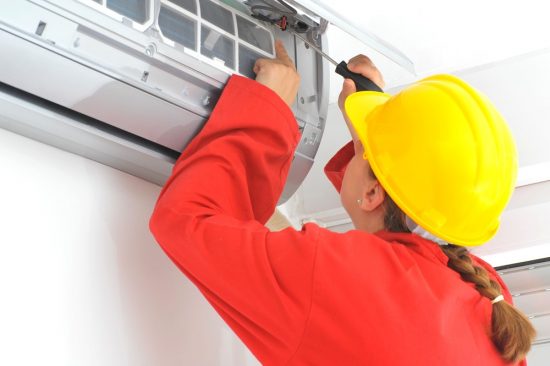
HVAC
The highly technical field of HVAC has garnered significant support for women and minority workers in recent years. Women in HVACR, a national organization for women in the HVAC industry, has been around for over 12 years and offers opportunities for women to network and further their industrial education through forums, classes, and annual conferences.

Roofing
Like its HVAC counterpart, National Women in Roofing is a national organization supporting women in the U.S. roofing industry through social media networking and further education. NWIR is currently steadily growing in membership and, with sponsorship and support, hopes to continue the growing trend of women in roofing for years to come. Further information about women roofing contractors can be found at this webinar with the founder of NWIR.

Windows
Window installers and glaziers have one of the most difficult and dangerous construction jobs in the U.S. today. Although the stress and risk levels for window contractors are relatively high, this industry remains number nine on the list of best construction jobs. Perhaps this is why more women are being drawn to the profession now than ever before. The success of women like Nicole Harris, the current President and CEO of the National Glass Association, demonstrates that women can and should be at the forefront of the window industry.
Conclusion: Traditional homemaker vs Modern home-maker?
The construction industry is booming, and women are making themselves known in fields across the sector. National bodies for solar, HVAC, roofing, and glaziers provide communication and education opportunities for women contractors all over the country, ensuring they get the tools and support they need to succeed in a male dominated field.
Women contractors throughout the country are acting as pioneers in the construction industry —including local PDX business owners like Holly Huntley at Environs and Megan at Eight Penny Nail. If these positive trends continue, women will continue to be a force to be reckoned with in the construction world and pave the way to an unified and equal future workplace.
Guest Blog Post: Ape Caves Hike
Hello! I’m Tiffany Thompson, OTI’s Advocacy Program Manager. I have been having so much fun hanging out with the Tradeswomen from Bitching Hikes and I wanted to share my enthusiasm and invite you to get involved!
Not only do I get to hang out with an amazing group of women but I also get to go on new adventures. For example, I went hiking in a cave! No, more than a cave a lava tube! If you haven’t been to the Ape Caves, I would highly recommend it. And, if you haven’t joined the hiking group yet, it should be your very next step! I am not a huge hiker but this has been a lot of fun. They select easy hikes in beautiful places. So, I hope to see you at the next one.
Join the group on Facebook to be the first to know about upcoming hikes!
Making Construction Work for Women – Guest Blog by Megan Wild
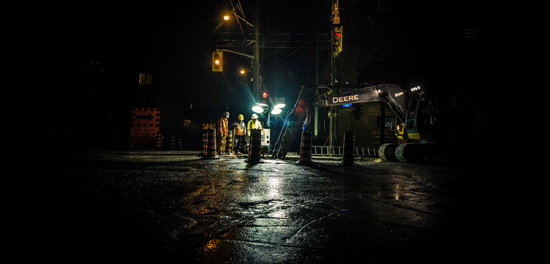
Evaluating the Growth of Women’s Roles in Construction
As the Great Recession becomes a distant memory, the housing and construction markets are poised to make a big comeback. The overall construction industry is projected to grow by just over three percent by 2019, and residential construction is expected to do even better as people get back into the business of investing in homes. Population growth will help as Millennials begin to raise their own families and seek a place to set down more permanent roots during the general economic recovery.
While this projection is great news on the surface, such growth begs an obvious question: Will the construction industry be able to keep up?
The Construction Industry Struggles to Attract New Workers
Despite the positive outlook for jobs in the construction industry, the industry needs to do more to attract and train new workers who will stay in these jobs.
With the decline of trade schools and vocational education resulting from nearly two decades of focus on standardized testing and college-readiness programs, most students lack the skills they need to work even entry-level construction jobs without employers investing in on-the-job training for them. The Department of Labor recommends much stronger outreach and recruitment programs to make these jobs more attractive to potential workers.
Women in Construction: An Untapped Resource
According to the National Women’s Law Center, women make up only about three percent of the construction industry’s workforce — a statistic that has remained relatively stable despite the fact that more women are entering the workforce than ever before.
A recent McKinsey study reports that 80 percent of Millennial women look at a potential employer’s record on promoting diversity when choosing among job offers. This makes it all the more challenging for construction companies to entice young female employees, as they aren’t very diverse workplace to begin with. It’s a potentially vicious cycle.
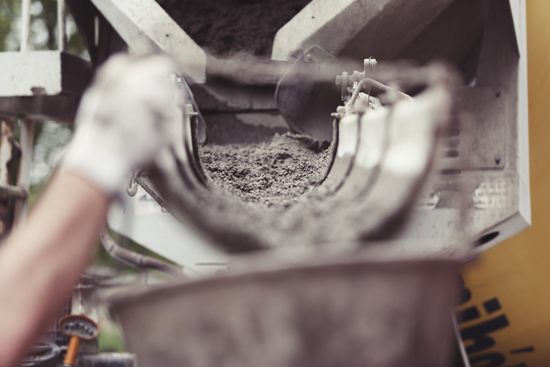
Additionally, women face structural obstacles to attaining career success and promotions in the construction field. Because there are so few of them, they lack female role models and mentors in the industry, so they are often less able than their male counterparts to network and grease the social wheels to climb the ladder of leadership. Their skills may also be undervalued by predominantly male leadership as well.
Finally, many women who are interested in construction and careers in the trade industries face a set of cultural assumptions about their abilities and desires. They may be encouraged to follow more traditionally “feminine” service paths in the beauty or healthcare service industries, when in reality they want to use their hands to build things.
For example, Queens construction worker Herlema Owens explains that she knew in a flash she wanted to do construction: “It was exciting and on that first day, I knew this was exactly what I wanted to do for the rest of my life.”
Luckily for Owens, she was able to follow her dream through sheer strength of spirit, but she realized that other women might not be so luckily. To help educate women about their options in the construction industry, she founded the Association of Women Construction Workers of America, a nonprofit organization that runs classes and supports women in the trades.
Organizations like Owens’ are crucial components in attracting women into construction jobs. In addition, large construction firms will have to take the lead to attract women and change their workplace culture to make sure women feel both safe and valued on the job.
Companies such as Ring Power who sell new and used construction equipment make it clear on their website that they are willing to hire anyone who is capable to complete the job, gender is not an obstruction to a job. More companies like this are needed to promote the advancement of women in construction trades.
To this end, equal training and opportunities for advancement must be offered, and it’s important for construction firms to enact and enforce robust anti-discrimination and anti-harassment policies that all employees must follow. When workplace culture evolves to value women, more women will stick with the field.
Construction companies will need to take the lead on attracting women into the field if they hope to compete during the coming boom years. After all, no company can expand — let alone survive — if it can’t attract enough workers to get the jobs done. Women are a critical, untapped resource, and smart companies will be on the cutting edge of getting women into the construction industry in large numbers.
……………………………………………………………………..
Megan Wild is a construction writer who specializes in residential homes. She likes writing about construction, real estate, and other industries on her blog, Your Wild Home.
Guest Blog: Why Women Play Such an Important Role in Home Improvement Trades
Why Women Play Such an Important Role in Home Improvement Trades
By Katherine Oakes
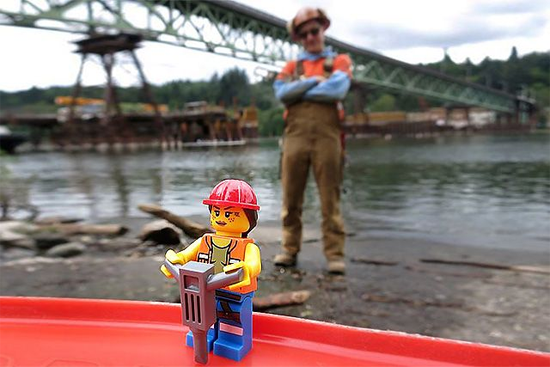
When you think of women’s roles in home improvement throughout history, it has been mostly associated only with the more superficial—yet just as important—aspect of interior design, style, and aesthetics. This sort of labeling and compartmentalizing has created a bottleneck in the industry of home improvement for the different jobs available to women and has left a large gap in between both genders and their respective roles. At Modernize, we know that a love for home improvement, no matter what kind, is something that can be appreciated by everyone.
Over the years, as the career landscape began to shift, women sought out opportunities for more physical and laborious jobs, and groups like Oregon Tradeswomen, Inc. worked hard to pave the way and create equal opportunities. Now, more than ever, there are more women working in the home improvement industry, but in the physically-demanding sectors that would have otherwise been designated for men. This trend has been rising incrementally over time and for many interesting reasons, and much of it is happening because of the women in the workforce who want to make it that way.
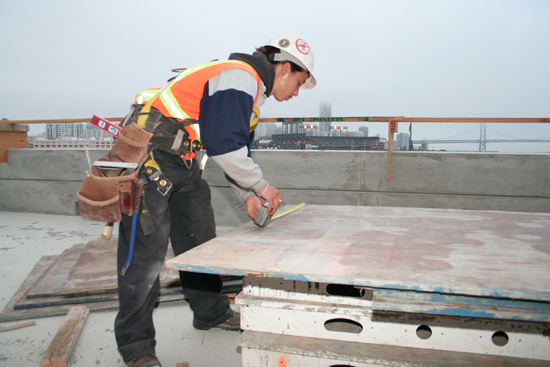
In a Take Part article about why more employers are beginning to see things in a different light, Jesse Duran, a former military recruiter, says he “actively seeks out potential students, starting with the YouthBuild programs to get them young, because a girl who is told to put down that hammer or stop playing so rough may be getting cut off from the opportunity to gain experience before she even knows it exists.” The idea here is that, for some women, choosing a job that fits within a more traditional career path could potentially be avoided from a young age if those women’s strengths are outside of the boardroom.
Interestingly enough, there has even been more of a demand for women in this workforce as Take Part notes, “Duran said his job placing women is getting easier. He asked the unions what they were looking for, and all said they want someone who can do the work, no matter what gender, and they meant it. Many bosses are clamoring to hire women in the trades, because companies like Avon have stipulated they need at least 15 percent of workers on building projects in New York City to be women”. So with all of this new information at their fingertips, women who would rather see more opportunities available to them and others in the home improvement trade have the right to feel invigorated and inspired to keep going. So long as there is a demand for gender equality and diversity then, it seems, that more even doors will continue to be opened for them.
Guest Blog Post: Three Exceptional People… by Sapphire Sasha
Three Exceptional People Who Prove Women Can Thrive in Any Industry
It’s undeniable that there are some jobs and industries that many still consider to be unsuitable for women, and a few years ago, the STEM industry was one of them. Thanks to the unrelenting efforts of those who saw the potential women could have in these fields, we’ve certainly come a long way in the push for gender equality, and if this growing support for women in STEM industries is any indication of future trends, we should see support for women in the trades grow as well.
Of course, the fight is never easy, and on some days, tradeswomen may find themselves struggling against forces that would see them abandon their jobs and head for more “women-friendly” industries. If today is one of those days, just remember the following women who succeeded in industries others thought they couldn’t thrive in.
1. Jeri Ellsworth
Everyone knows that working in science and mechanical fields can be difficult for women, but simply learning the trades can prove to be a challenge as well. Jeri Ellsworth serves as an inspiration to any girl who’s ever found herself unable to get the support she needs to pursue her interests, having taught herself to program by reading a Commodore 64’s manuals. Her interest shifted to dirt-track race cars when she began driving them with her father, and she designed and assembled her own models and dropped out of high school to continue the business. In an interview with EE Times, she talks about how her interest in computers and engineering never waned, and how she didn’t take formal education in the field until her late 20s, when she attended Walla Walla College to study circuit design for about a year. In the following years, she would go on to develop gaming hardware and is now known for the development of castAR, a system that brings “3D holographic like projections in AR, fully immersive environments in VR”.
2. Kate Carter
Female athletes have certainly benefited from a more accommodating view in major sports, and with current fitness trends being the way they are, many women have also begun to take up running, be it for fitness, health or recreation. However, many still think that taking up hobbies such as running is impossible for women who want to take care of their families. Kate Carter is an amazing example of how women can juggle a family, a full-time job, and a running habit all at once. She is a Lifestyle editor for The Guardian, where she maintains the Running Blog, and in an interview with Tootsa, she says that it was motherhood that actually got her started on running, saying, “To be honest, I’d love to say I had some great inspirational moment – and I’ve certainly always loved watching running and athletics generally – but to be honest it was just practical! I was on maternity leave with my youngest daughter, wanted to get a bit fitter and healthier again, and running was the most efficient way to do that!” Kate runs six days a week and has even competed in the London marathon, and she’s seen as one of the foremost experts on running.
3. Col. Cynthia Tinkham
Perhaps the most male-dominated field is the military, and even as laws have relaxed and allowed women to join the army in service of their country, many still struggle to secure high-ranking positions, and sometimes even the respect of their colleagues. Col. Cynthia Tinkham, however, made history when she became the first woman to have major command in the Oklahoma Army National Guard last year, drawing a victory for women everywhere. However, she told KOCO.com that it wasn’t prestige that she was looking for when she joined the army. “I think it was always just that attraction to public service, I think I was always just geared that way,” she said. She’s been serving the army for over 25 years, and she sees herself serving for much longer. “I love my job. I love what I’m doing and I’ll stay as long as I can. Until it’s time, either I feel it’s time or it’s just time for me to move on and make way for other people,” she said.
Written by Sapphire Sasha
Exclusive for Oregon Tradeswomen, Inc.
